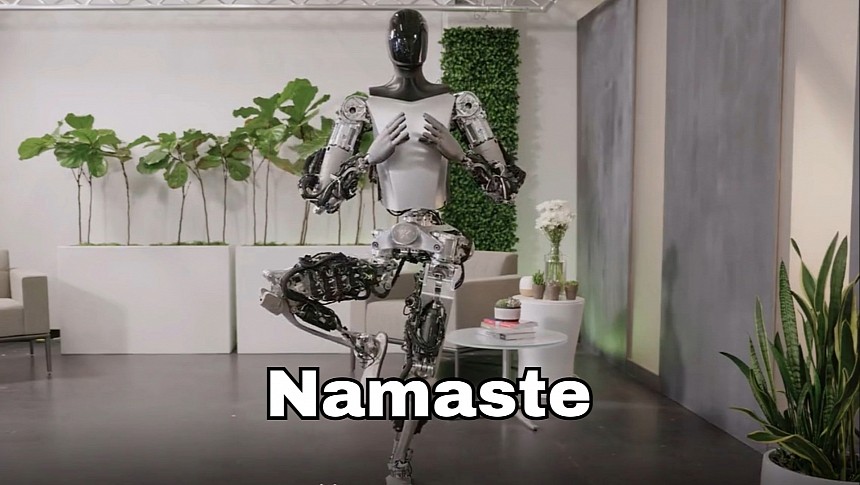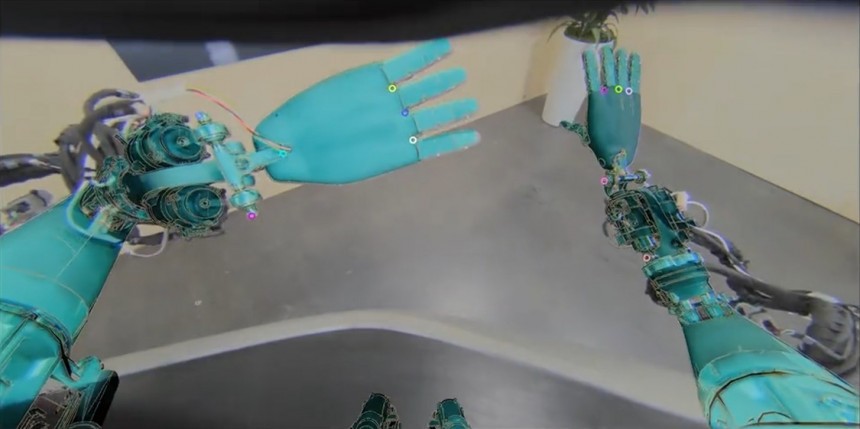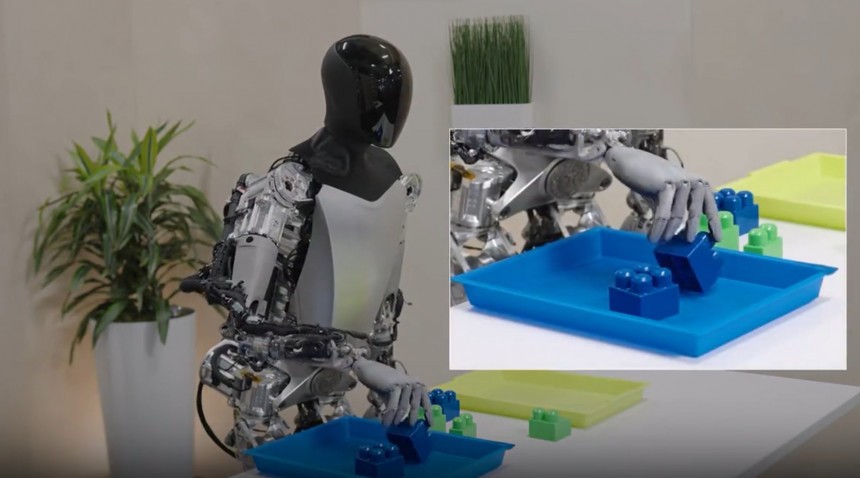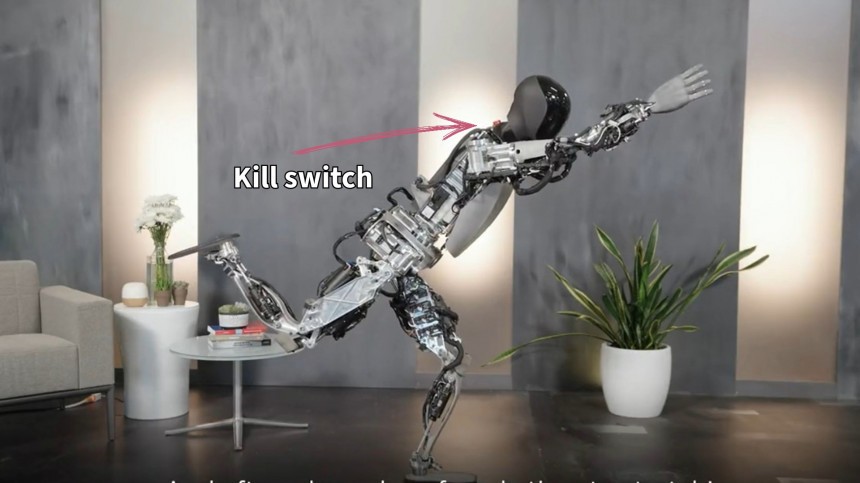Tesla has over 50 positions open for the Optimus program in Palo Alto, California, and is trying to lure talent by showing incredible progress with its Optimus robot. In a video shared on X, Tesla shows Optimus performing complicated movements with fantastic fluidity. An earlier prototype had to be carried on-stage on a platform only a year ago during the AI Day event.
Although many think of Tesla as a car company, Elon Musk argues it is much more than that. Tesla also makes the software that runs its EVs, has a leg up in artificial intelligence with Tesla FSD, and works on robots that one day would replace humans for the ugliest jobs. That, besides other traditional lines of business like energy (generation, storage, and distribution) and services.
Musk made the first official announcement about Tesla's humanoid robot in August 2021 and promised that the first "decent" prototype would be unveiled by the end of 2022. Surprisingly, Musk kept his word and showed off not one but two robots on AI Day last September, Bumble C and Optimus. The latter could barely move its hand to wave to the crowd and had to be brought on stage on a platform.
The latest update on the Optimus program was offered in May at the 2023 Annual Shareholder Meeting. The progress was impressive, as the upgraded robots could walk around and grab things, albeit clumsily. The most important achievement was that they could learn from humans with no task-specific programming involved. Even then, Optimus's precision impressed many people, being gentle enough not to break an egg's shell with its robotic hands.
Fast forward to today, and Tesla wowed everyone with another video of the Optimus robot. You can find it attached below if you haven't seen it yet. The first thing you notice is the fluid movements, which are now almost human-like. Optimus can sort items using its vision and adjust to the changing environment when the human tries to confuse it by moving the objects. At the video's end, it shows incredible balance as it performs what looks like a yoga move. That's a long way from what it could do in the May video.
I was so mesmerized by Optimus's moves that I had to watch the video several times before I noticed the explanations the Tesla team gave in writing. According to these, the Tesla Optimus can self-calibrate its arms and legs and uses only vision and joint position encoders to precisely locate its limbs in space (proprioception). Like Tesla FSD, Optimus uses a neural network that runs entirely onboard to learn new things and perform tasks. This is trained fully end to end, from video in to control (behavior) out.
One interesting consequence is that, as you see about 48 seconds into the video, Optimus "knows" that one object is not placed correctly in the basket. It then flips it into the upright position, not because a programmer wrote the code but because it was trained on videos showing how it's done.
This opens a whole new range of possibilities, allowing the robot to do the same with shop tools, kitchenware, and other objects it might encounter in the real world. Like a baby, it learns from its interactions with objects and humans.
After the video was shared on X, Elon Musk revealed that software is not the only area where the Tesla team made advancements. The Optimus robot uses significantly improved actuators, sensors, and overall mechanics. Like most animals, it can use additional sensing such as audio, temperature, proprioception, and others to map the surroundings, but no LiDAR, radar, or ultrasonics.
It is also built with a human hand (five fingers instead of "lobster claws" like other robots) and human characteristics, which makes sense because we designed our world (and tools) to work great with human hands. This allows Optimus to interact with objects in a more human-like fashion, being able to replace humans for most tasks.
In fact, this is precisely the Optimus robot's mission, as Tesla announced a while back. The humanoid robot will be able to work in factories and do the most unpleasant chores. Tesla wants everyone to afford an Optimus, and it considers its robot program even more critical than electric vehicles for the future of humanity.
Those afraid that robots will one day not only replace us for hard work but eliminate humans as a species should worry no more. Tesla is already considering this scenario plausible, and that's why it fitted the Optimus in the video with a red kill switch at the back of its neck. Musk is also thinking of implementing better safety checks. According to one of his tweets, the robot "needs to be easy to pause using a remote or your phone with no centralized override." Something like "the best kill switch is no kill switch."
Musk made the first official announcement about Tesla's humanoid robot in August 2021 and promised that the first "decent" prototype would be unveiled by the end of 2022. Surprisingly, Musk kept his word and showed off not one but two robots on AI Day last September, Bumble C and Optimus. The latter could barely move its hand to wave to the crowd and had to be brought on stage on a platform.
The latest update on the Optimus program was offered in May at the 2023 Annual Shareholder Meeting. The progress was impressive, as the upgraded robots could walk around and grab things, albeit clumsily. The most important achievement was that they could learn from humans with no task-specific programming involved. Even then, Optimus's precision impressed many people, being gentle enough not to break an egg's shell with its robotic hands.
I was so mesmerized by Optimus's moves that I had to watch the video several times before I noticed the explanations the Tesla team gave in writing. According to these, the Tesla Optimus can self-calibrate its arms and legs and uses only vision and joint position encoders to precisely locate its limbs in space (proprioception). Like Tesla FSD, Optimus uses a neural network that runs entirely onboard to learn new things and perform tasks. This is trained fully end to end, from video in to control (behavior) out.
One interesting consequence is that, as you see about 48 seconds into the video, Optimus "knows" that one object is not placed correctly in the basket. It then flips it into the upright position, not because a programmer wrote the code but because it was trained on videos showing how it's done.
After the video was shared on X, Elon Musk revealed that software is not the only area where the Tesla team made advancements. The Optimus robot uses significantly improved actuators, sensors, and overall mechanics. Like most animals, it can use additional sensing such as audio, temperature, proprioception, and others to map the surroundings, but no LiDAR, radar, or ultrasonics.
It is also built with a human hand (five fingers instead of "lobster claws" like other robots) and human characteristics, which makes sense because we designed our world (and tools) to work great with human hands. This allows Optimus to interact with objects in a more human-like fashion, being able to replace humans for most tasks.
In fact, this is precisely the Optimus robot's mission, as Tesla announced a while back. The humanoid robot will be able to work in factories and do the most unpleasant chores. Tesla wants everyone to afford an Optimus, and it considers its robot program even more critical than electric vehicles for the future of humanity.











